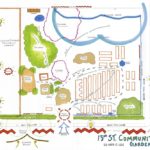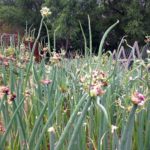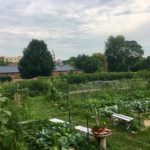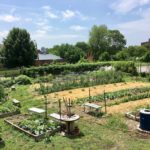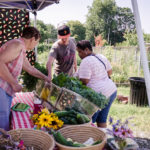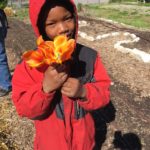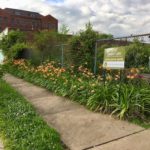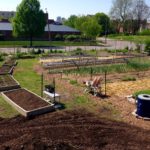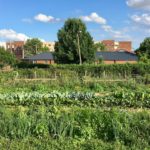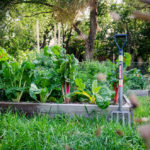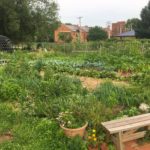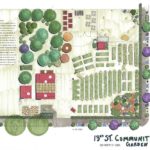- Location: St. Louis, Missouri, USA.
- Site: 1/2 acre of vacant parcels, former cooperage.
- Status: Initiated Summer 2016, completed Summer 2019.
- Scope: Site assessment and detailed design for community garden and neighborhood farmers market. Deeply engaged with the community, instituted growing practices, and led build out of design.
- Accolades: Featured in Permaculture Design Magazine.
The 13th Street Community Garden is a long-standing institution in Old North St. Louis, a neighborhood revitalizing from the bottom-up. Run solely by neighbors volunteering their time, the garden hosts community events, 20 rental garden beds, and for 6 months out of the year, operates the North City Farmers’ Market. Providing a beautiful space in a sometimes-desolate place, the garden serves as a haven for life. Beauty, ecological education, and food justice combine in this garden to create a powerful pattern that can be replicated anywhere that has vacant land and residents who love their neighborhood. This design serves to further the efforts already in place when we got here.
Real Earth Design founder, Jason Gerhardt, engaged with the community in Old North to bring his talents to the community garden and farmers’ market to expand capacity, creating a design to follow for project improvements. Real Earth Design Permaculture Designer, Sarah Gerhardt, brought her skillful hand rendering for the design documents. We engaged with this project for three years developing new growing areas, sharing permaculture growing practices, building soils, creating crop rotation layouts, and completing a whole site design so the community had a clear way forward.
This site is built on top of a demolished factory. The soil is best described as urban rubble. A main focus was on improving soil depth through growing practices such as sheet mulching, deep forking, cover cropping, composting, and proper plant selection. This set the stage for abundant food production in this food desert, which continues to be affordably shared in the community. Read more about this project in the article published by the Permaculture Institute.

